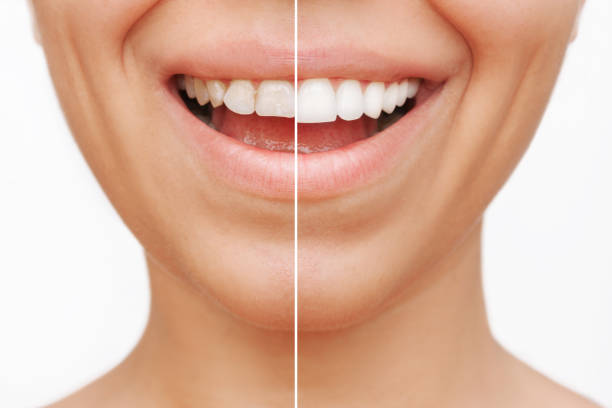How to Protect Your Teeth with Crowns

How to Protect Your Teeth with Crowns
Dental crowns serve as a powerful solution for restoring and protecting compromised teeth, ensuring both functionality and aesthetic appeal. Whether your teeth have been weakened by decay, fractures, or excessive wear, crowns provide a resilient, long-term safeguard that enhances your oral health. These custom-fitted restorations not only fortify damaged teeth but also help maintain a natural and confident smile.
In this comprehensive guide, we’ll explore the numerous advantages of teeth with crowns, their various types, and the best practices to ensure their longevity, keeping your teeth strong and healthy for years to come.
What Are Dental Crowns?
A dental crown is a custom-made cap that covers a damaged or weakened tooth. It helps restore its shape, strength, and function while preventing further deterioration. Crowns can be made from various materials, including porcelain, ceramic, metal, or a combination of these. They provide a strong, protective layer that reinforces the tooth structure and prevents additional damage.
Why Are Crowns Needed?
- Protect weakened or cracked teeth: Prevent further breakage by covering compromised areas.
- Restore worn-down or broken teeth: Reinforce teeth that have suffered structural loss.
- Support a tooth with a large filling: Strengthen teeth that have large fillings with limited natural tooth structure.
- Cover a dental implant or root canal-treated tooth: Provide stability and a natural-looking appearance.
- Improve the appearance of discolored or misshapen teeth: Enhance overall smile aesthetics.
Benefits of Protecting Your Teeth with Crowns
Crowns provide numerous advantages beyond just improving your smile. Here’s how they help protect your teeth:
1. Strengthening Weak Teeth
A tooth that has suffered from extensive decay, fractures, or root canal treatment can become weak and prone to breakage. A crown reinforces the tooth, ensuring it can handle daily chewing and biting pressures without further damage.
2. Preventing Further Decay and Damage
Once a crown is placed, it acts as a protective barrier, shielding the tooth from harmful bacteria and acids that can lead to additional decay. This is particularly beneficial for teeth with large fillings or previous decay issues.
3. Restoring Functionality
Missing or damaged teeth can make chewing and speaking difficult. Dental crowns restore proper function, allowing you to eat comfortably and speak clearly without hesitation.
4. Enhancing Aesthetic Appeal
Crowns provide a natural look, seamlessly blending with your existing teeth. This makes them an excellent cosmetic solution for discolored, misshapen, or chipped teeth, helping you regain confidence in your smile.
5. Long-Lasting Durability
When properly cared for, crowns can last 10-15 years or longer. They are made from high-quality, sturdy materials that withstand daily wear and tear, making them a long-term investment in your oral health.
Types of Dental Crowns
Choosing the right type of crown depends on your needs, budget, and aesthetic preferences. Here’s a comparison of common crown materials:
| Crown Type | Material | Pros | Cons |
| Porcelain | Ceramic | Natural appearance, biocompatible | Less durable for back teeth |
| Metal | Gold, Silver, or Alloy | Extremely durable | Less aesthetic appeal |
| Porcelain-Fused-to-Metal (PFM) | Metal base with porcelain overlay | Strong and natural-looking | May show metal at gumline over time |
| Zirconia | High-strength ceramic | Highly durable, blends well | Can be more expensive |
How to Care for Your Teeth with Crowns
Proper care and maintenance are essential to maximize the longevity of your dental crowns. Follow these steps to ensure they stay in top condition:
1. Maintain Good Oral Hygiene
- Brush twice daily using fluoride toothpaste to prevent decay and plaque buildup.
- Floss around the crowned tooth to remove debris and prevent gum disease.
- Use an antibacterial mouthwash to keep your gums healthy and free from infection.
2. Avoid Hard or Sticky Foods
- Chewing on ice, hard candies, or non-food items can crack or loosen a crown.
- Sticky foods like caramel and gum may pull the crown off or cause damage, leading to costly repairs.
3. Regular Dental Checkups
- Visit your dentist every six months for routine cleanings and examinations.
- Inform your dentist if you experience discomfort, sensitivity, or loosening of the crown.
- Early detection of potential issues can help extend the life of your dental crown.
4. Protect Your Teeth from Grinding
- If you grind your teeth at night, wear a nightguard to prevent crown wear and damage.
- Address any underlying bite issues with your dentist to prevent unnecessary stress on your crowns.
When to Replace a Dental Crown
Crowns are durable, but they don’t last forever. Here are signs that indicate you may need a replacement:
- Visible cracks or wear on the crown.
- Discomfort or pain while chewing that wasn’t previously present.
- Gum recession around the crown, exposing vulnerable tooth structure.
- Loosening or detachment of the crown.
If you notice any of these signs, schedule a visit with your dentist to assess the condition of your crown and determine if a replacement is necessary.
Wrapping it Up
Protecting your teeth with crowns is a smart investment in your long-term oral health. Crowns offer strength, durability, and aesthetic benefits, ensuring that your smile remains healthy and beautiful. By choosing the right type of crown, practicing good oral hygiene, and scheduling regular dental visits, you can extend the life of your crowns and maintain excellent dental health.
If you’re considering dental crowns or need to replace an existing one, consult a professional like Ramlaoui DDS for expert advice and care. Your teeth deserve the best protection!

